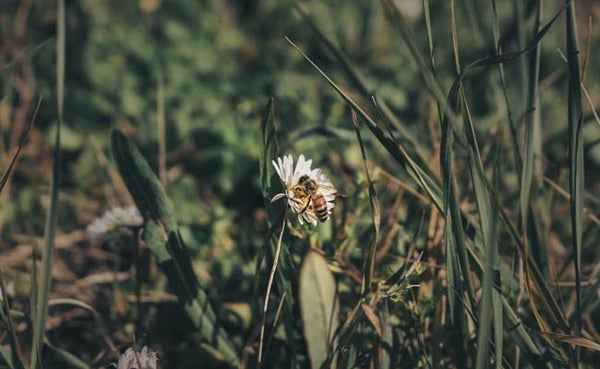Earlier this month, we explored the rise in popularity of faux lawns in our campaign against artificial grass blog post. We’re now diving deeper into some of the reasons why this plastic alternative to a natural lawn could be problematic.
Artificial lawns remove vital wildlife habitat
Natural lawns offer a home for millions of insects and bugs that thrive off the soil. Birds then feed off the worms, slugs and snails found in the grass, all contributing to our vital ecosystem. If you’re able to let the daisies grow alongside a few weeds here and there, you’ll provide an even richer environment for all manner of little critters to thrive including hugely important pollinators such as bees and hoverflies.
Safe to say, artificial grass provides none of the environmental benefits of a natural alternative.
The plastic used is hard to recycle
Artificial grass is made from a variety of unnatural materials including polyethylene, polypropylene and nylon. Some artificial grass is manufactured in a way that binds materials together, making them difficult to separate and therefore very difficult to recycle. In addition, after an average 5-10 years of use, the contaminants then found in the faux grass also make recycling it a tricky task. So, when it’s time to replace an artificial lawn, it’s likely headed straight to the landfill!
Artificial grass can overheat in hot weather
The plastic in artificial grass retains more heat than a natural lawn. Although it will look green and healthy all year round, once artificial grass gets too hot, it’s rendered unusable as a traditional lawn as it sometimes can’t even be walked on; this is particularly bad news for children and pets.
It carries a large carbon footprint
Soil is a natural carbon store, taking it from the environment and slowly releasing it back into plants and the ground. In stark contrast, artificial grass produces carbon during manufacture, transportation and installation. Furthermore, when the top layer of soil is removed to lay artificial grass, carbon that was previously locked within the soil is put back into the atmosphere.
It’s high maintenance to keep it clean
It’s a misconception that artificial turf is a low maintenance alternative to real grass. An unnatural lawn that collects dirt and debris needs cleaning regularly, especially if you have a pet that uses the garden for toileting. This can include hosing it down, or even vacuuming it
Although artificial grass may be more aesthetically pleasing all year round than a natural lawn, we have to ask ourselves, is the detrimental impact on the environment really worth it?
We found this opinion piece by RHS qualified garden designer Jack Wallington very insightful, take a read over a cuppa if you have five minutes to spare.


